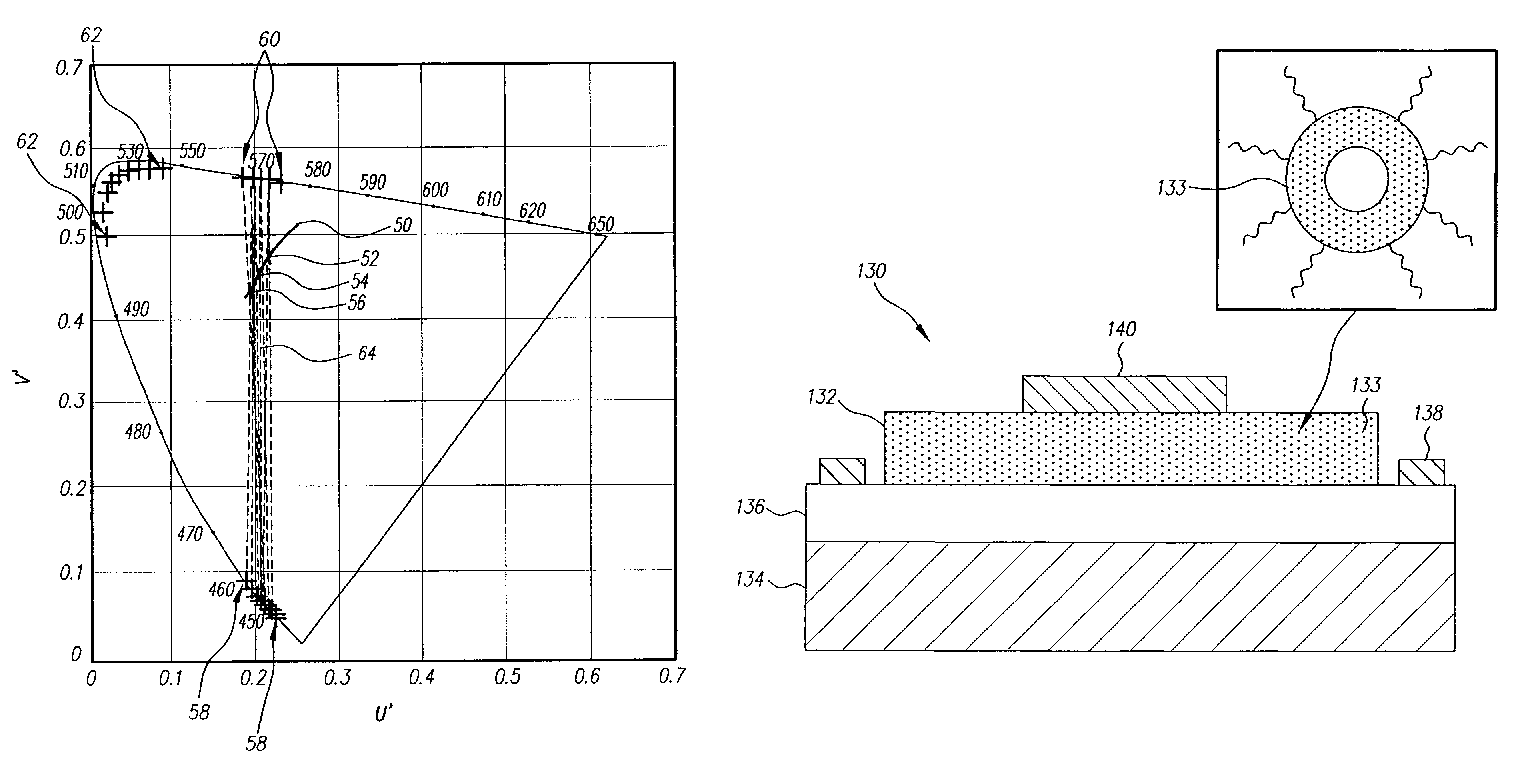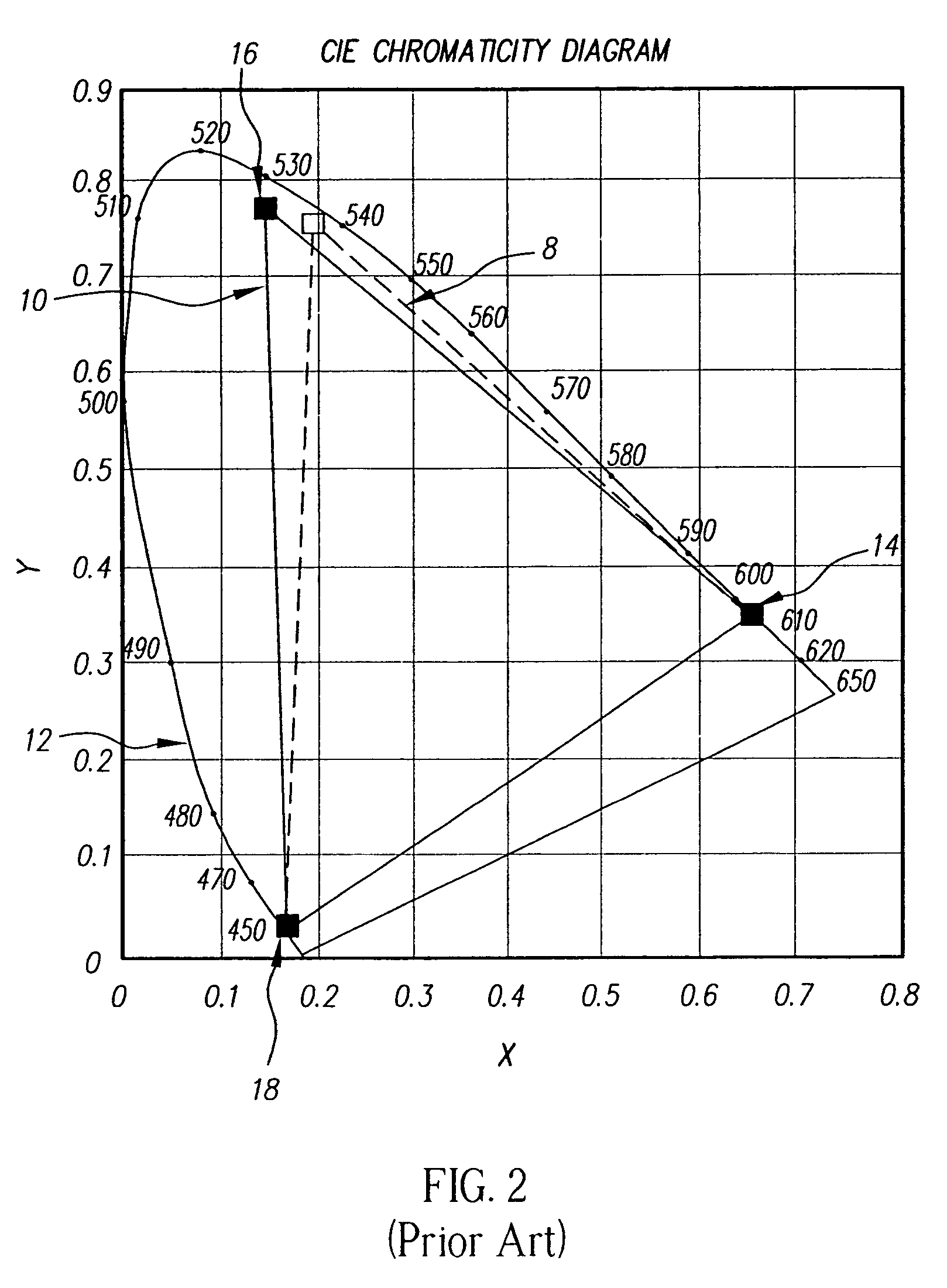Color electro-luminescent display with improved efficiency
a technology of electroluminescent display and efficiency, applied in the direction of discharge tube luminescnet screen, discharge tube/lamp details, electric discharge lamps, etc., can solve the problem of reducing the efficiency at which the human eye converts radiant power to perceived brightness from 90% to only 79%, and limiting the color gamut of the display. , to achieve the effect of improving efficiency, increasing color gamut, and improving luminous efficiency
- Summary
- Abstract
- Description
- Claims
- Application Information
AI Technical Summary
Benefits of technology
Problems solved by technology
Method used
Image
Examples
Embodiment Construction
[0028]The invention is directed towards an electroluminescent display device having at least four differently colored light-emitting elements, comprising complementary yellow and blue light-emitting elements, as well as green and red light-emitting elements, wherein the chromaticity coordinates of the complementary yellow and blue light-emitting elements, along with the green light-emitting element, are chosen to provide improved display efficiency and color gamut.
[0029]FIG. 4 shows a plot of three curves representing the locus of three hypothetical distributions of emitters in the Commission Internationale de l'Eclairage (CIE) 1976 u′ v′ chromaticity space. This particular chromaticity space has been used in the plot because of its industry-wide acceptance that it is perceptually uniform. In this plot, the curve 32 shows the locus of a continuum of Gaussian emitters with spectra as in FIG. 3, with a FWHM of 30 nm and dominant wavelength varying over the visible range, in comparison...
PUM
 Login to View More
Login to View More Abstract
Description
Claims
Application Information
 Login to View More
Login to View More - R&D
- Intellectual Property
- Life Sciences
- Materials
- Tech Scout
- Unparalleled Data Quality
- Higher Quality Content
- 60% Fewer Hallucinations
Browse by: Latest US Patents, China's latest patents, Technical Efficacy Thesaurus, Application Domain, Technology Topic, Popular Technical Reports.
© 2025 PatSnap. All rights reserved.Legal|Privacy policy|Modern Slavery Act Transparency Statement|Sitemap|About US| Contact US: help@patsnap.com



